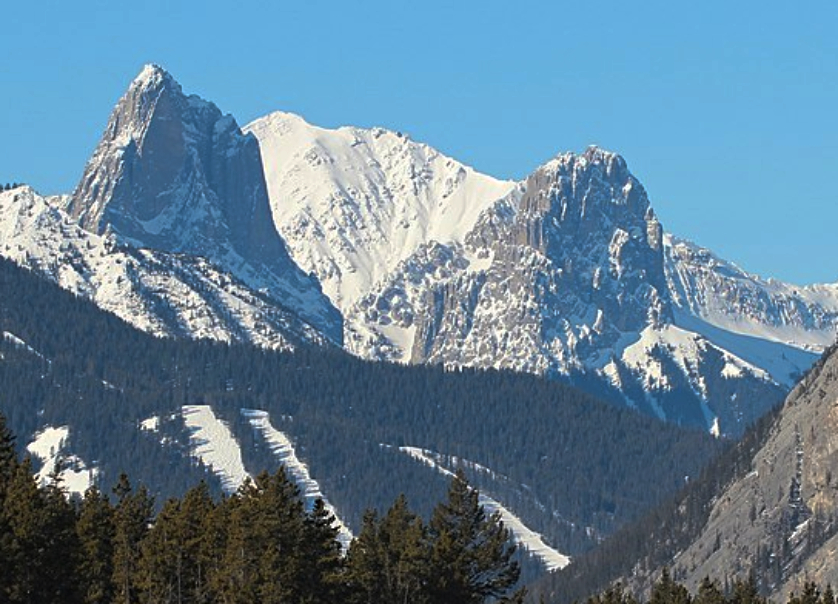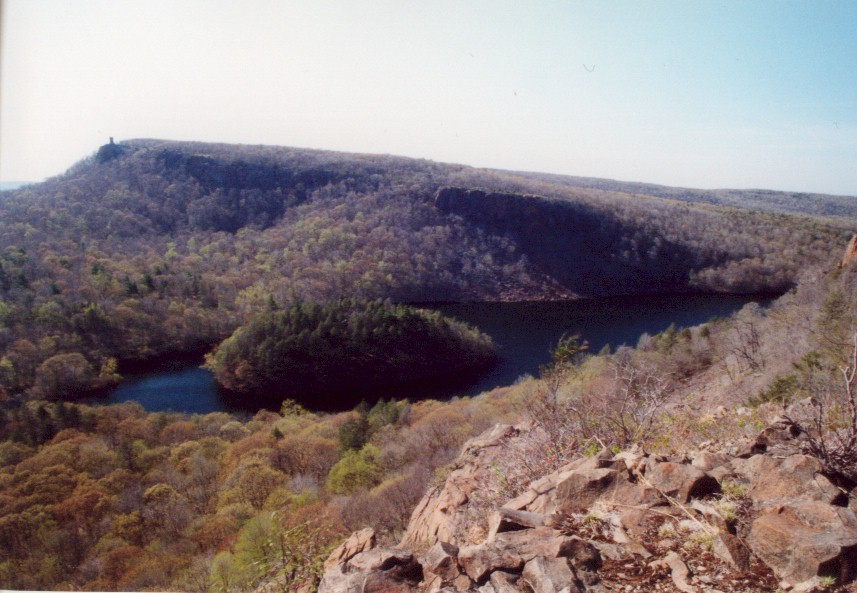|
Sawback Range
The Sawback Range is a mountain range of the Canadian Rockies that stretches from the Bow Valley in Alberta into southeastern Banff National Park. Mountains This range includes the following mountains and peaks: See also * Ranges of the Canadian Rockies References Ranges of the Canadian Rockies Mountain ranges of Alberta Mountains of Banff National Park {{AlbertaRockies-geo-stub ... [...More Info...] [...Related Items...] OR: [Wikipedia] [Google] [Baidu] |
Canada
Canada is a country in North America. Its ten provinces and three territories extend from the Atlantic Ocean to the Pacific Ocean and northward into the Arctic Ocean, covering over , making it the world's second-largest country by total area. Its southern and western border with the United States, stretching , is the world's longest binational land border. Canada's capital is Ottawa, and its three largest metropolitan areas are Toronto, Montreal, and Vancouver. Indigenous peoples have continuously inhabited what is now Canada for thousands of years. Beginning in the 16th century, British and French expeditions explored and later settled along the Atlantic coast. As a consequence of various armed conflicts, France ceded nearly all of its colonies in North America in 1763. In 1867, with the union of three British North American colonies through Confederation, Canada was formed as a federal dominion of four provinces. This began an accretion of provinces an ... [...More Info...] [...Related Items...] OR: [Wikipedia] [Google] [Baidu] |
Mount Ishbel
Mount Ishbel is a mountain peak in Banff National Park of Alberta, Canada. The peak is located in the Sawback Range in Alberta's Rockies, north of the Bow Valley Parkway and east of Johnston Canyon. It was named in 1956 after Ishbel MacDonald, the eldest daughter of Prime Minister Ramsay MacDonald of Great Britain. It gives the name to the Ishbel Group, a stratigraphical unit of the Western Canadian Sedimentary Basin. The peak is the subject of Group of Seven member Lawren Harris's painting ''Mountain Forms''. Climate Based on the Köppen climate classification, Mount Ishbel is located in a subarctic climate zone with cold, snowy winters, and mild summers. Temperatures can drop below −20 °C with wind chill factors below −30 °C. Geology Like other mountains in Banff Park, the mountain is composed of sedimentary rock laid down from the Precambrian to Jurassic periods. Formed in shallow seas, this sedimentary rock was pushed east and over the top of younger rock during ... [...More Info...] [...Related Items...] OR: [Wikipedia] [Google] [Baidu] |
Ranges Of The Canadian Rockies
The Canadian Rockies are a segment of the North American Rocky Mountains found in the Canadian provinces of Alberta and British Columbia. List of ranges There is no universally accepted hierarchical division of the Canadian Rockies into subranges. For ease of navigation only, this article follows and divides the Canadian Rockies into Far Northern Rockies, Northern Continental Ranges, Central Main Ranges, Central Front Ranges and Southern Continental Ranges, each of these subdivided in distinct areas and ranges. From north to south and west to east, these mountain ranges are: Far Northern Rockies The Far Northern Rockies lie in British Columbia, and run from Prince George almost to the Yukon border. * Muskwa Ranges ** Akie Range ** Battle of Britain Range ** Deserters Range ** Gataga Ranges ** Rabbit Plateau ** Sentinel Range ** Stone Range ** Terminal Range ** Tochieka Range ** Tower of London Range ** Truncate Range * Hart Ranges **Misinchinka Ranges (from Peace Arm - Willis ... [...More Info...] [...Related Items...] OR: [Wikipedia] [Google] [Baidu] |
The Finger (Alberta)
The Finger is a mountain in the Sawback Range of the Canadian Rockies in Alberta, Canada Canada is a country in North America. Its ten provinces and three territories extend from the Atlantic Ocean to the Pacific Ocean and northward into the Arctic Ocean, covering over , making it the world's second-largest country by tot .... The name is unofficial as it does not appear in the Canadian Geographical Names Database. References Two-thousanders of Alberta Mountains of Banff National Park {{AlbertaRockies-geo-stub ... [...More Info...] [...Related Items...] OR: [Wikipedia] [Google] [Baidu] |
Mount Edith
Mount Edith is a mountain located in the Bow River valley of Banff National Park. Situated in the Sawback Range, it comprises three limestone peaks (south, centre, north) with the southern peak being the highest followed by the centre and northern peaks respectively. All three peaks can be scrambled with the southern peak demanding the highest difficulty on the west side. The mountain was named in 1886 for Edith Orde who worked as an assistant to Lady Agnes Macdonald, the wife of Canada's first prime minister. Geology Mount Edith is composed of limestone, a sedimentary rock laid down during the Devonian period. Formed in shallow seas, this sedimentary rock was pushed east and over the top of younger rock during the Laramide orogeny. Climate Based on the Köppen climate classification, Mount Edith is located in a subarctic climate with cold, snowy winters, and mild summers. Temperatures can drop below -20 C with wind chill factors below -30 C. Weather conditions during summer ... [...More Info...] [...Related Items...] OR: [Wikipedia] [Google] [Baidu] |
Mount Fifi
Mount Fifi was named in 1886 after Edith Orde's dog Fifi. Mount Louis, Mount Edith, and Mount Fifi were named on the trip. It is located in the Sawback range of Banff National Park, Alberta. Geology Mount Fifi is composed of limestone, a sedimentary rock laid down from the Precambrian to Jurassic periods. Formed in shallow seas, this sedimentary rock was pushed east and over the top of younger rock during the Laramide orogeny. Climate Based on the Köppen climate classification, Mount Fifi is located in a subarctic climate with cold, snowy winters, and mild summers. Temperatures can drop below -20 C with wind chill factors below -30 C. Weather conditions during summer months are optimum for climbing. See also * List of mountains of Canada *Geology of Alberta The geology of Alberta encompasses parts of the Canadian Rockies and thick sedimentary sequences, bearing coal, oil and natural gas, atop complex Precambrian crystalline basement rock. Geologic history, stratigraphy & ... [...More Info...] [...Related Items...] OR: [Wikipedia] [Google] [Baidu] |
Mount Louis
Mount Louis is a mountain summit located in southeast Banff National Park in Alberta, Canada. It is part of the Sawback Range which is a subset of the Canadian Rockies. The mountain was named in 1886 after Louis B. Stewart who surveyed in the Banff Park area in 1904 with his father, George Stewart, the first Park Superintendent. __NOTOC__ Geology Mount Louis is composed of limestone, a sedimentary rock laid down during the Devonian period. Formed in shallow seas, this sedimentary rock was pushed east and over the top of younger rock during the Laramide orogeny. Climate Based on the Köppen climate classification, Mount Louis is located in a subarctic climate zone with cold, snowy winters, and mild summers. Temperatures can drop below -20 °C with wind chill factors below -30 °C. Weather conditions during summer months are optimum for climbing. Precipitation runoff from Mount Louis drains into the Bow River which is a tributary of the Saskatchewan River. See also * List of m ... [...More Info...] [...Related Items...] OR: [Wikipedia] [Google] [Baidu] |
Cockscomb Mountain (Alberta)
Cockscomb Mountain was named in 1921 because the outline of the summit was said to resemble a roosters comb. It is located in the Sawback Range in Alberta. The mountain is composed of sedimentary rock laid down during the Precambrian to Jurassic periods. Formed in shallow seas, this sedimentary rock was pushed east and over the top of younger rock during the Laramide orogeny. __NOTOC__ Climate Based on the Köppen climate classification, Cockscomb Mountain is located in a subarctic climate zone with cold, snowy winters, and mild summers. Temperatures can drop below −20 °C with wind chill factors below −30 °C. Precipitation runoff from the mountain drains into tributaries of the Bow River. See also * List of mountains of Canada * Geography of Alberta Alberta is one of the thirteen provinces and territories of Canada. Located in Western Canada, the province has an area of and is bounded to the south by the United States state of Montana along 49° north for ... [...More Info...] [...Related Items...] OR: [Wikipedia] [Google] [Baidu] |
Oyster Peak
Oyster Peak was named by George M. Dawson in 1884. It is located in the Sawback Range in Alberta. See also * Geography of Alberta Alberta is one of the thirteen provinces and territories of Canada. Located in Western Canada, the province has an area of and is bounded to the south by the United States state of Montana along 49° north for ; to the east at 110° west by t ... References Two-thousanders of Alberta Alberta's Rockies {{AlbertaRockies-geo-stub ... [...More Info...] [...Related Items...] OR: [Wikipedia] [Google] [Baidu] |
Mount Cory (Alberta)
Mount Cory is a mountain located in the Bow River Valley in southeast Banff National Park, just north of Banff, Alberta, Canada. The mountain was named in 1923 after William Wallace Cory, deputy minister of the Interior from 1905 to 1930. The "Hole in the Wall" The gaping "Hole in the Wall" cave is located in the upper portion of the western side of Mount Cory. The cave is a landmark easily viewed from the nearby Trans-Canada Highway. The formation is natural, despite the seemingly regular pentagon In geometry, a pentagon (from the Greek πέντε ''pente'' meaning ''five'' and γωνία ''gonia'' meaning ''angle'') is any five-sided polygon or 5-gon. The sum of the internal angles in a simple pentagon is 540°. A pentagon may be simpl ...al shape of its entrance as seen from a distance. The cave is about 60 feet high and 100 feet deep and has often been visited by climbers. References Caves of Alberta Mountains of Banff National Park Two-thousanders of Alberta< ... [...More Info...] [...Related Items...] OR: [Wikipedia] [Google] [Baidu] |
Block Mountain
Fault blocks are very large blocks of rock, sometimes hundreds of kilometres in extent, created by tectonic and localized stresses in Earth's crust. Large areas of bedrock are broken up into blocks by faults. Blocks are characterized by relatively uniform lithology. The largest of these fault blocks are called crustal blocks. Large crustal blocks broken off from tectonic plates are called terranes. Those terranes which are the full thickness of the lithosphere are called microplates. Continent-sized blocks are called variously ''microcontinents, continental ribbons, H-blocks, extensional allochthons and outer highs.'' Because most stresses relate to the tectonic activity of moving plates, most motion between blocks is horizontal, that is parallel to the Earth's crust by strike-slip faults. However vertical movement of blocks produces much more dramatic results. Landforms (mountains, hills, ridges, lakes, valleys, etc.) are sometimes formed when the faults have a large ver ... [...More Info...] [...Related Items...] OR: [Wikipedia] [Google] [Baidu] |
Alberta
Alberta ( ) is one of the thirteen provinces and territories of Canada. It is part of Western Canada and is one of the three prairie provinces. Alberta is bordered by British Columbia to the west, Saskatchewan to the east, the Northwest Territories (NWT) to the north, and the U.S. state of Montana to the south. It is one of the only two landlocked provinces in Canada (Saskatchewan being the other). The eastern part of the province is occupied by the Great Plains, while the western part borders the Rocky Mountains. The province has a predominantly continental climate but experiences quick temperature changes due to air aridity. Seasonal temperature swings are less pronounced in western Alberta due to occasional Chinook winds. Alberta is the fourth largest province by area at , and the fourth most populous, being home to 4,262,635 people. Alberta's capital is Edmonton, while Calgary is its largest city. The two are Alberta's largest census metropolitan areas. More tha ... [...More Info...] [...Related Items...] OR: [Wikipedia] [Google] [Baidu] |




